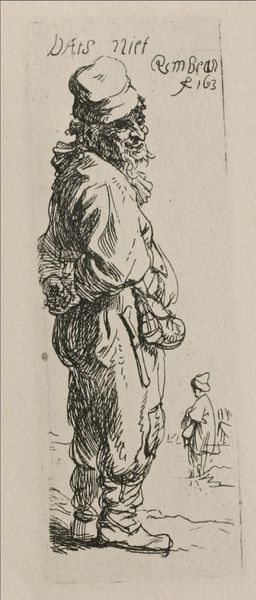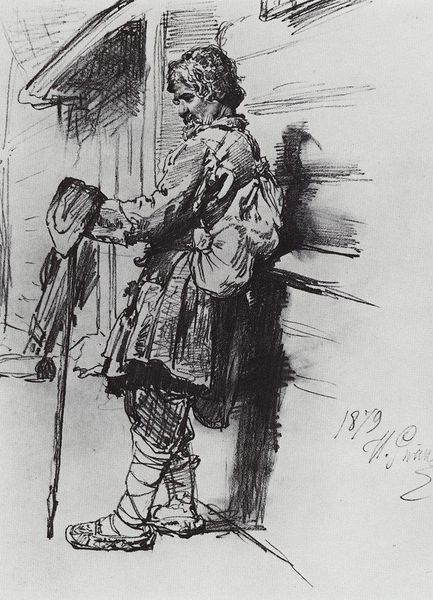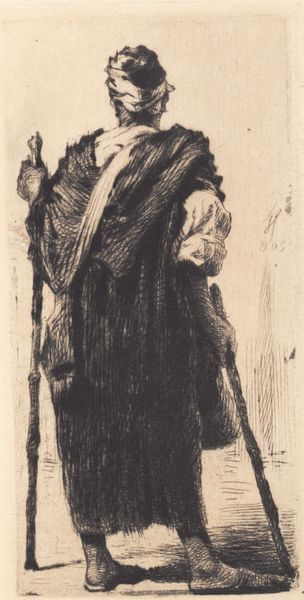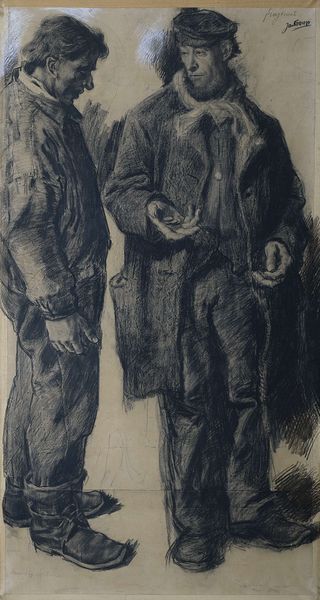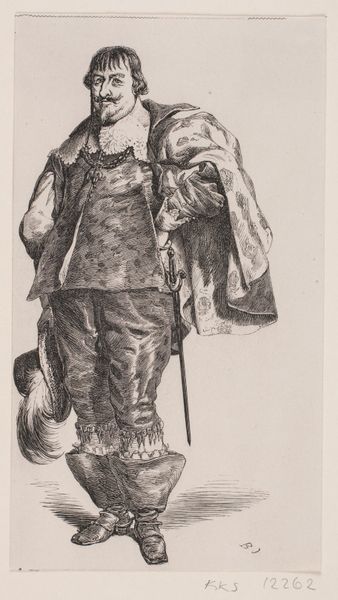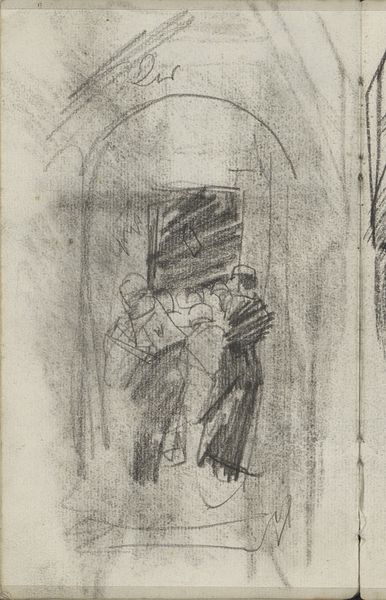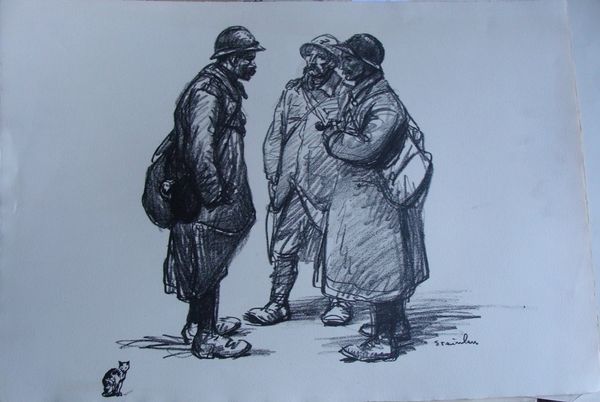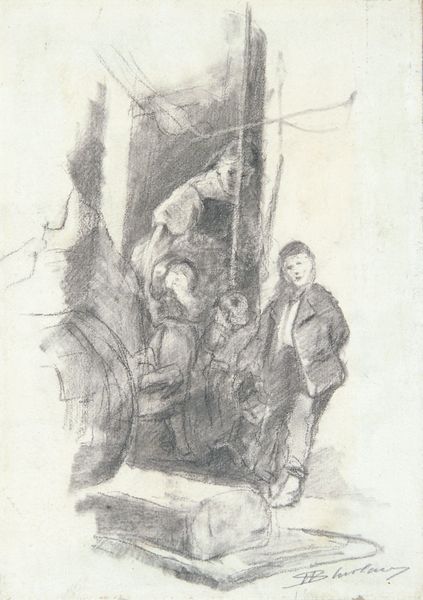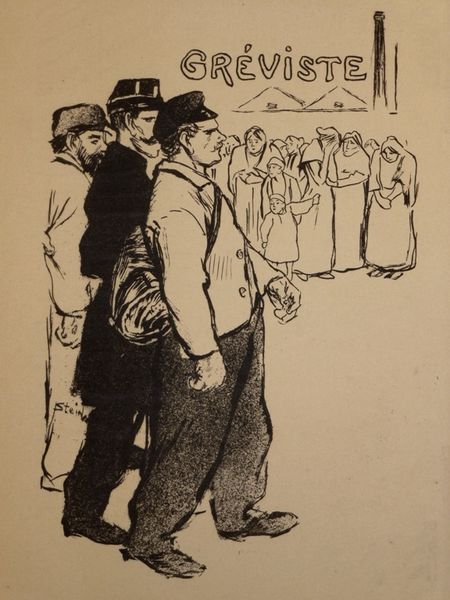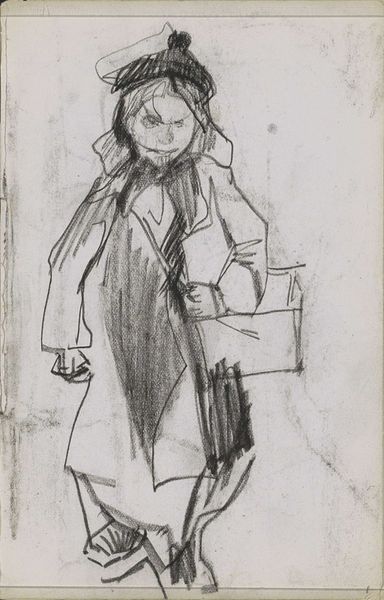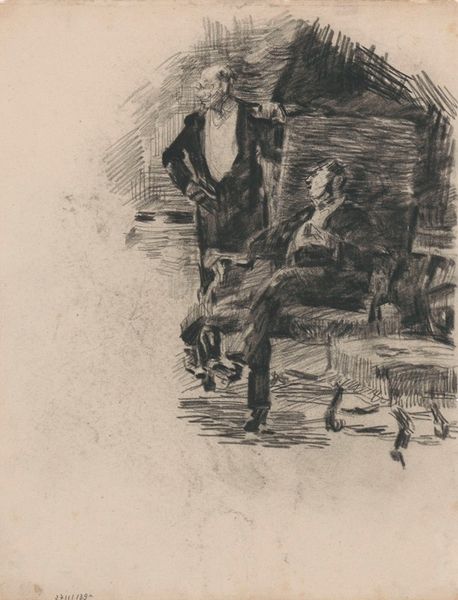
Copyright: Public domain
Curator: This is Vasily Perov’s pencil sketch, "By Train," created in 1879. What are your initial impressions? Editor: Immediately, I see a muted palette, naturally, given the medium. But the artist's deliberate hatching and cross-hatching construct a figure emerging from a soft, undefined space. It's the very definition of fleeting. Curator: Precisely. Consider Perov's use of pencil. It’s a readily available, relatively inexpensive material—accessible. He’s documenting a slice of Russian life, probably experienced on the railways which, in the late 19th century, were rapidly transforming Russian society and connecting different social strata. Editor: The sketch's strength lies in its restraint, actually. Note the delicate shading and the stark contrast that illuminates certain elements. For instance, look how Perov directs your eye through a sophisticated play of dark and light; the face, the cane's tip. There is a formal strategy here, an organization that provides entry into the piece. Curator: But beyond just artistry, think about what the image itself says about Russia's modernization. We see someone of, likely, middling means – the intelligentsia perhaps - rendered as both mobile and yet, perhaps, burdened. Look at the baggage and how they hold their walking stick - as much for support as guidance perhaps. Railroads meant a more mobile labor force, shifting social dynamics… Perov captured these tensions effectively. Editor: True, yet such narratives depend on visual elements for their success, don't they? Take, for example, the compositional choice to position the subject almost centrally within the frame, a slight list to one side. That adds a hint of instability; is it social or perhaps a commentary on personal struggle, given that subtle instability is essential for conveying deeper meaning in realist art like this. Curator: It's more about what it signified, or, put another way, what Perov experienced around him, wouldn't you say? Art capturing how industrial advances were subtly disrupting lives across the landscape and laboring classes. He saw art as means of reflecting socio-economic currents of the time - I doubt Perov labored under thoughts of visual instability. Editor: Maybe not. Regardless, this brief encounter with Perov’s sketch brings both artistic and socio-historical insight to mind. Curator: Absolutely. And it reminds us of how much even a seemingly simple drawing can tell us about a specific moment and its long shadow, in social movements and ways of life.
Comments
No comments
Be the first to comment and join the conversation on the ultimate creative platform.
